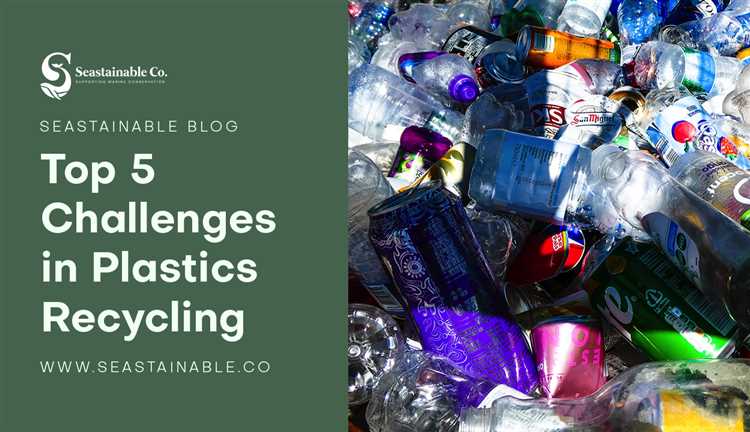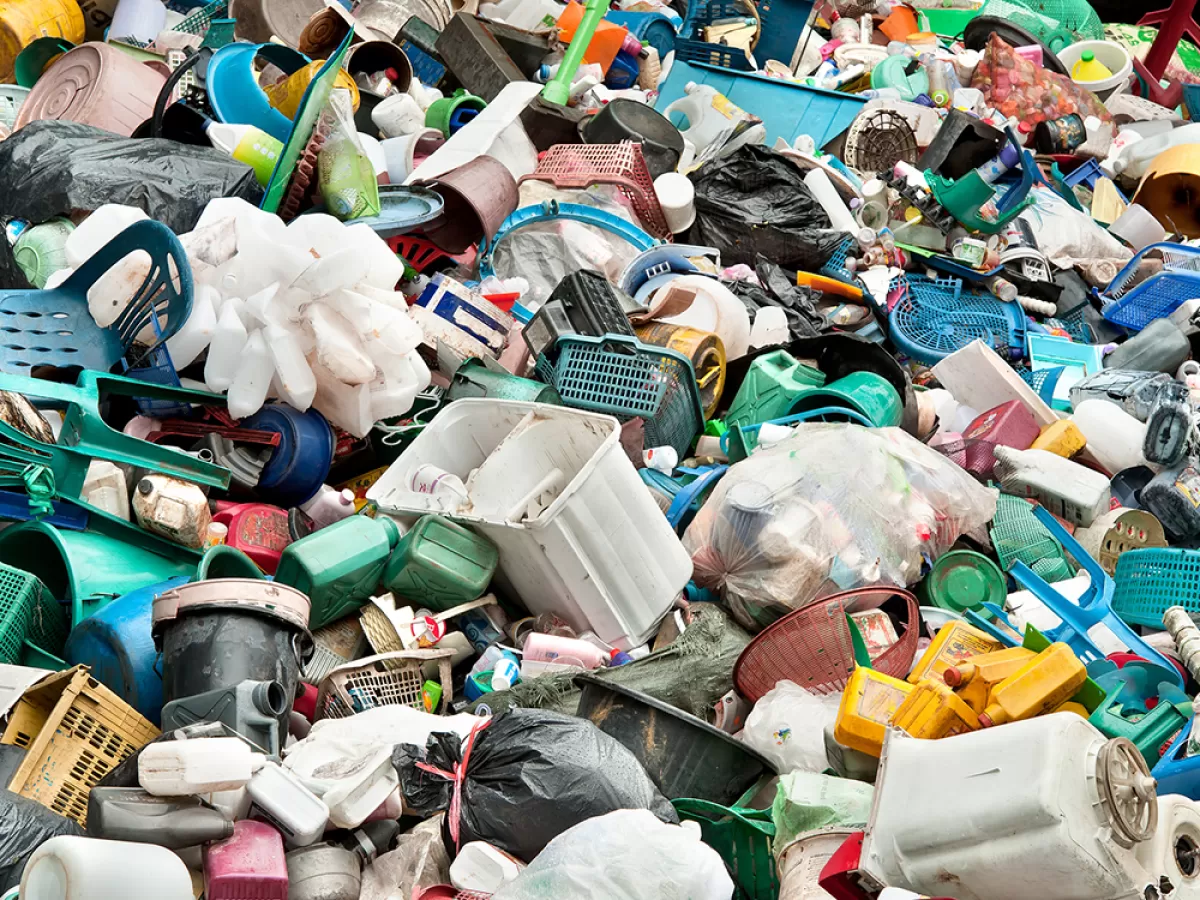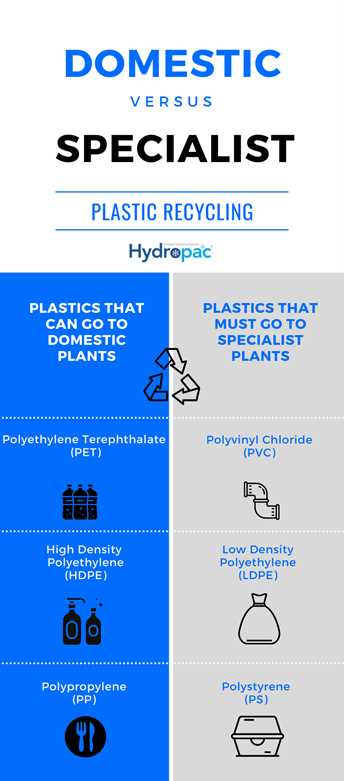Plastic has become an integral part of our modern lives, but its impact on the environment cannot be ignored. While recycling is often touted as the solution to plastic waste, not all plastics are created equal when it comes to recyclability. In fact, some types of plastic are incredibly difficult to recycle, posing significant challenges for waste management systems around the world.
One of the most challenging types of plastic to recycle is polyvinyl chloride, more commonly known as PVC. This type of plastic is widely used in construction materials, packaging, and even clothing. However, the additives used to make PVC flexible and durable, such as phthalates and lead, make it a nightmare for recyclers. Separating PVC from other types of plastic is time-consuming and expensive, and the resulting recycled material is often of poor quality.
Another plastic that poses difficulties in recycling is polystyrene, commonly referred to as Styrofoam. Despite its lightweight and insulating properties, Styrofoam is notorious for its environmental impact. The material is bulky and takes up a significant amount of space in landfills. Moreover, it is difficult to clean and sort Styrofoam for recycling due to its low density and fragility. As a result, much of the Styrofoam waste ends up in landfill sites, where it can take hundreds of years to decompose.
High-density polyethylene, or HDPE, is another type of plastic that presents challenges in recycling. HDPE is commonly used in milk jugs, detergent bottles, and even playground equipment. While it is considered one of the more readily recyclable plastics, its recycling rate is still far from ideal. The problem lies in the collection and sorting process. HDPE items often have different colors and labels, which need to be removed before recycling. This adds complexity to the recycling process and can result in lower quality recycled material.
As our dependence on plastic continues to grow, finding effective solutions for recycling these challenging plastics is crucial. Innovations in recycling technologies and increased consumer awareness are key to improving the recyclability of different types of plastics. By addressing these difficulties head-on, we can pave the way for a more sustainable future and reduce the environmental impact of plastic waste.
- The Challenges of Recycling Different Plastics
- Lack of Standardization
- Contamination
- Downcycling
- Exploring the Environmental Impact
- Understanding Plastic Composition
- Identifying the Most Problematic Plastics
- 1. Polystyrene (PS)
- 2. Polyvinyl Chloride (PVC)
- 3. Polyethylene Terephthalate (PET)
- Q&A:
- Why is it so challenging to recycle certain types of plastic?
- Which types of plastic are the most difficult to recycle?
- What are the environmental impacts of not being able to recycle certain types of plastic?
- Is there any hope for improving the recycling of challenging types of plastic?
- Are there any alternatives to recycling difficult types of plastic?
- Why is it difficult to recycle certain types of plastics?
- What are some examples of difficult-to-recycle plastics?
The Challenges of Recycling Different Plastics

Recycling is an important process for reducing waste and minimizing environmental impact. However, when it comes to plastics, not all types are created equal in terms of recyclability. Different plastics have different chemical compositions, properties, and recycling techniques, which present unique challenges for recycling facilities.
Lack of Standardization
One challenge of recycling different plastics is the lack of standardization in plastic types. Plastics are coded with a resin identification code (RIC) for easier sorting, but not all recycling facilities accept or have the capability to recycle all plastic types. This lack of standardization can lead to confusion and inefficiencies in the recycling process.
Another challenge is the presence of mixed plastics, where different types of plastics are combined in a single product or packaging. These mixed plastics can be difficult to separate and recycle, as they require specialized techniques and equipment.
Contamination
Contamination is another major challenge in recycling plastic. Plastics can become contaminated with food waste, dirt, or other materials, which can affect the quality and purity of the recycled plastic. This contamination can lead to lower-quality recycled plastic or render it unusable.
Plastic packaging, such as bottles or containers, can also be contaminated with different types of plastics, labels, or adhesives. Removing these contaminants is a labor-intensive process that requires additional sorting and cleaning steps in the recycling facility.
Downcycling
Many plastic types can only be downcycled, meaning they are recycled into lower-quality products. For example, most plastics can only be recycled into secondary products like plastic lumber or fibers. This limited recycling capability reduces the overall value and environmental benefits of recycling.
Furthermore, downcycling can result in a loss of material quality and performance. Each recycling cycle degrades the plastic’s properties, making it less suitable for high-performance applications. This can limit the market demand for recycled plastics and hinder the development of a circular economy.
In conclusion, the challenges of recycling different plastics are diverse and complex. Standardization, contamination, and limited recycling capabilities all contribute to the difficulties faced by recycling facilities in processing and turning plastic waste into valuable resources. Addressing these challenges requires a collaborative effort from manufacturers, consumers, and recycling facilities to improve recycling technologies and practices.
Exploring the Environmental Impact
Plastic waste is a major environmental concern, with its impact felt across the globe. The improper disposal and inefficient recycling of plastics contribute to pollution, the destruction of habitats, and harm to marine life.
One of the most challenging plastics to recycle is polystyrene, commonly known as styrofoam. Despite being lightweight and insulating, this type of plastic has a significant environmental impact. Polystyrene takes centuries to decompose in natural conditions, and its production involves the release of harmful greenhouse gases.
Another problematic plastic is PVC, also known as polyvinyl chloride. PVC is widely used in construction materials, packaging, and pipes due to its durability and flexibility. However, the manufacturing and disposal of PVC have negative environmental consequences. It releases toxic chemicals such as dioxins and phthalates during production and can release hazardous additives when incinerated.
Moreover, plastic microbeads, commonly found in personal care products like scrubs and toothpaste, pose a threat to aquatic ecosystems. These tiny beads are often not captured by wastewater treatment systems and eventually end up in oceans and rivers. Marine organisms mistakenly ingest microbeads, leading to bioaccumulation and negative impacts on the food chain.
| Type of Plastic | Environmental Impact |
|---|---|
| Polystyrene | Takes centuries to decompose. Releases harmful greenhouse gases during production. |
| PVC | Releases toxic chemicals during production. Can release hazardous additives when incinerated. |
| Microbeads | Threatens aquatic ecosystems. Ingested by marine organisms and bioaccumulates in the food chain. |
Efforts to address the environmental impact of challenging plastics include education campaigns on proper disposal and recycling, technological advancements in recycling processes, and policy measures to restrict the use of harmful plastics.
In conclusion, exploring the environmental impact of challenging plastics highlights the need for sustainable solutions to reduce, reuse, and recycle plastic waste. By understanding the negative consequences of specific types of plastics, we can work towards a cleaner and healthier planet.
Understanding Plastic Composition

Plastic is a versatile material made from polymers, which are large molecules composed of repeating subunits. The composition of plastics varies depending on the type and can consist of different combinations of carbon, hydrogen, oxygen, nitrogen, and other elements. Understanding the composition of plastic is essential for recycling, as different types of plastics require different recycling processes.
One of the primary components of plastic is carbon, which gives it its strength and durability. Hydrogen is another common element found in plastic and helps to provide flexibility. Oxygen can be present in plastic as part of various functional groups, and nitrogen can be incorporated into plastics to enhance their performance.
Plastics are classified into categories based on their composition, such as polyethylene (PE), polypropylene (PP), polyvinyl chloride (PVC), and polystyrene (PS). Each of these categories has its unique chemical structure and properties, which determine how easily it can be recycled.
Some plastics, like PET (polyethylene terephthalate), are more straightforward to recycle because they consist of a single type of polymer. However, other plastics, such as multilayer packaging or composites, can be much more challenging to recycle due to their complex composition.
By understanding the composition of different types of plastics, researchers and recycling facilities can develop better methods for separating and recycling these materials. This knowledge is crucial for reducing plastic waste and minimizing the environmental impact of plastic production and disposal.
Identifying the Most Problematic Plastics
When it comes to recycling plastics, not all types are created equal. Some plastics are relatively easy to recycle, while others pose significant challenges. Identifying the most problematic plastics is crucial for finding solutions to improve recycling rates and reduce plastic waste.
1. Polystyrene (PS)
- Polystyrene, commonly known as Styrofoam, is widely used in packaging materials due to its light weight and excellent insulation properties.
- However, polystyrene is challenging to recycle, primarily because it is composed of multiple materials and is often contaminated with food residue.
- The lack of a market for recycled polystyrene also contributes to its low recycling rate.
2. Polyvinyl Chloride (PVC)
- Polyvinyl chloride, commonly known as PVC, is a versatile plastic used in various applications, including pipes, cables, and flooring.
- However, PVC presents significant challenges in recycling due to the presence of additives and low compatibility with other plastics.
- The release of harmful chemicals during the recycling process also makes PVC problematic.
3. Polyethylene Terephthalate (PET)

- Polyethylene terephthalate, commonly known as PET, is widely used in the production of beverage bottles and food packaging.
- While PET is one of the most commonly recycled plastics, it still poses challenges. Contamination, particularly from food and beverage residues, reduces its recyclability.
- PET recycling also requires high energy consumption.
Identifying these most problematic plastics is the first step towards finding innovative solutions to improve recycling rates and reduce plastic pollution. By understanding the specific challenges associated with each plastic type, researchers, policymakers, and manufacturers can work together to develop more effective recycling technologies and promote sustainable plastic consumption.
Q&A:
Why is it so challenging to recycle certain types of plastic?
There are several reasons why certain types of plastic are challenging to recycle. One reason is that some plastics are made from a combination of different materials which makes them difficult to separate and recycle. Additionally, some plastics have a complex chemical structure that makes them resistant to decomposition. Furthermore, the lack of infrastructure and technology for recycling certain types of plastic also contributes to the challenge.
Which types of plastic are the most difficult to recycle?
Some of the most challenging types of plastic to recycle include PVC (polyvinyl chloride), PS (polystyrene), and composite plastics. PVC contains additives that make it difficult to melt and recycle. PS is often contaminated with food waste, which hinders the recycling process. Composite plastics are made from a combination of different materials, making it difficult to separate and recycle each component.
What are the environmental impacts of not being able to recycle certain types of plastic?
The inability to recycle certain types of plastic leads to various environmental impacts. These plastics often end up in landfills or are incinerated, both of which contribute to air and water pollution. Furthermore, the production of new plastic requires the extraction of fossil fuels and energy-intensive processes, leading to greenhouse gas emissions. Additionally, the accumulation of non-recyclable plastic waste can harm wildlife and ecosystems.
Is there any hope for improving the recycling of challenging types of plastic?
Yes, there is hope for improving the recycling of challenging types of plastic. Advances in technology and research are being made to develop better recycling methods for these plastics. For example, new chemical processes are being explored to break down complex plastics into their original components, making recycling easier. Additionally, governments and organizations are investing in infrastructure and systems for collection and recycling of these difficult plastics.
Are there any alternatives to recycling difficult types of plastic?
Yes, there are alternatives to recycling difficult types of plastic. One alternative is to reduce the use of these plastics by opting for alternative materials such as glass or metal. Another option is to promote reusing the plastic items instead of recycling them. This can be done through initiatives like refillable containers or packaging. Additionally, encouraging the adoption of biodegradable plastics can also be a viable alternative to recycling certain types of plastic.
Why is it difficult to recycle certain types of plastics?
Recycling certain types of plastics can be difficult due to their complex chemical composition and the presence of additives. These factors make it challenging to separate and process the plastics effectively.
What are some examples of difficult-to-recycle plastics?
Some examples of difficult-to-recycle plastics include PVC (polyvinyl chloride), polystyrene, and composite plastics. These types of plastics are often not accepted in standard recycling programs due to their low demand and limited recycling infrastructure.